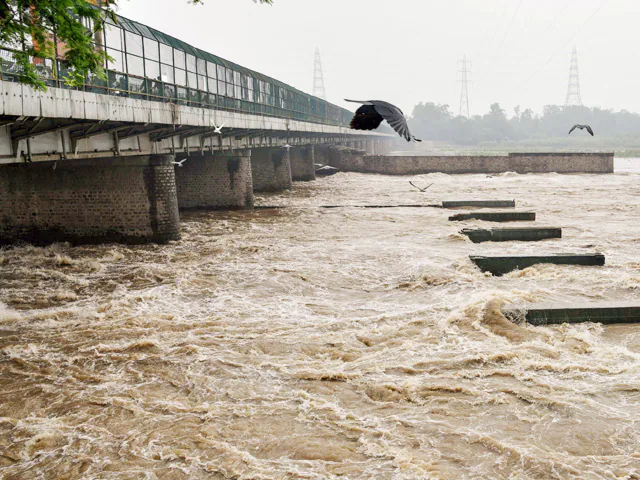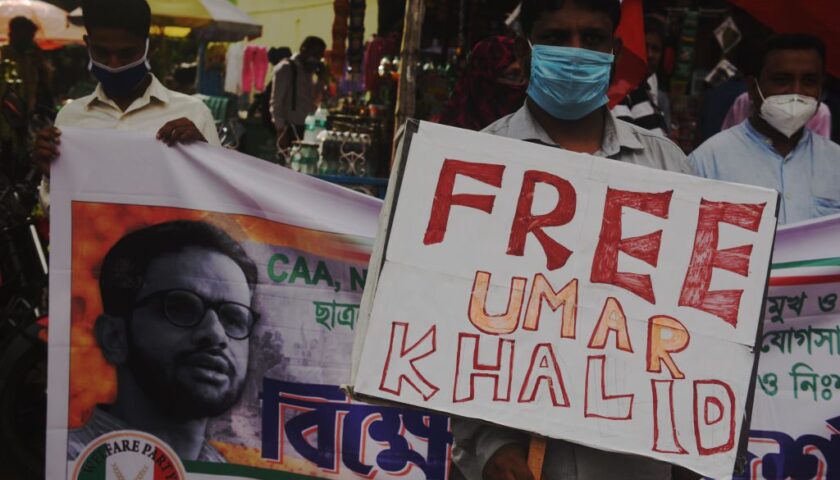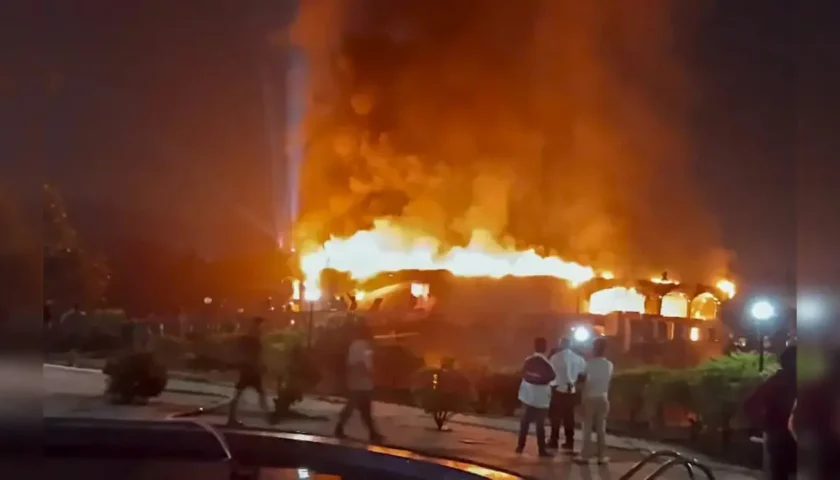Yamuna Above Danger Mark, Gurgaon Underwater After Cloudburst-Like Downpour
By: Javid Amin | 02 Sep 2025
The National Capital Region is once again grappling with the fury of the monsoon. On Tuesday morning, the Yamuna river breached the danger mark, prompting urgent evacuations in low-lying parts of Delhi, while neighbouring Gurgaon was left paralysed after record rainfall submerged its arterial roads.
Yamuna Above Danger Mark
At Delhi’s Old Railway Bridge, the Yamuna swelled to 205.75 metres, crossing the danger mark of 205.33 metres. Officials warned that the river could reach 206 metres by evening—the designated evacuation level—posing a severe flood threat.
The surge follows record discharges from Haryana’s Hathnikund barrage, where over 3.23 lakh cusecs of water was released by Monday noon. Additional inflows from the Wazirabad and Okhla barrages have worsened the situation.
The old railway bridge has been shut, and evacuations are underway in Mayur Vihar, Yamuna Bazar, and areas under the bridge. Relief camps are being set up with food, water, and medical support.
Delhi CM Rekha Gupta assured residents that flood preparedness measures had been taken. “Desilting of the river and drains was carried out over the past six months,” she said. Irrigation Minister Pravesh Sahib Singh added that all barrage gates were open to ensure smooth water flow.
City Choked by Rain and Traffic
Monday’s downpour brought Delhi’s already congested roads to a standstill. Major stretches at Qutub Minar, Kashmere Gate, Mehrauli, and Saket were jammed, with several underpasses waterlogged.
Social media was flooded with commuter grievances. In one widely shared post, a motorist rushing a patient to Max Hospital, Saket, lamented that their ambulance was stuck for over 30 minutes in gridlock.
The rain pulled Delhi’s maximum temperature down to 30.8°C, but with humidity between 85% and 100%, relief was short-lived. The IMD has forecast light rainfall over the next few days, with no colour-coded warning issued.
Gurgaon Underwater
Neighbouring Gurgaon bore the brunt of the monsoon, receiving 100mm of rain in just five hours between 3 pm and 8 pm Monday.
The deluge submerged roads under 2–3 feet of water, triggering a 4km traffic jam on NH-8 from Hero Honda Chowk to Narsingpur. Commuters were stranded for hours, schools announced emergency closures, and offices urged employees to work from home.
Residents reported flooded basements and damaged vehicles in several housing societies.
Voices from the Ground
-
Ramesh Kumar, shopkeeper, Yamuna Bazar (evacuated):
“We packed whatever we could carry. The water rises so fast — you don’t even get time to think. Every year we suffer, but this time it feels worse.” -
Shalini Verma, commuter, South Delhi:
“I left my office in Nehru Place at 6 pm and reached home in Gurgaon past 10 pm. Four hours on the road — and most of it spent standing still. The city just collapses with rain.” -
Anita Sharma, Gurgaon resident:
“Our society basement is flooded. Cars are half underwater. The school declared a holiday, but who will compensate for the damage to homes and vehicles?” -
Paramjeet Singh, autorickshaw driver, Mehrauli:
“I saw an ambulance stuck in traffic near Saket. People tried to make way, but there was nowhere to move. It was heartbreaking.” -
Delhi CM Rekha Gupta:
“We are ensuring food, shelter, and medical aid for affected families. I appeal to citizens to stay alert, avoid rumor-mongering, and cooperate with evacuation teams.”
Bigger Picture: Monsoon’s Relentless Grip
This crisis is part of a broader monsoon surge across North India, where above-normal rainfall is predicted through early September. Experts warn that Delhi’s drainage and flood-control infrastructure—long overdue for overhaul—remains its weakest link.
As citizens wade through knee-deep water and families pack their belongings into makeshift camps, the Yamuna continues to dictate the pace of life in the capital. For many, the question isn’t whether the city will flood again—but how often, and how badly.




